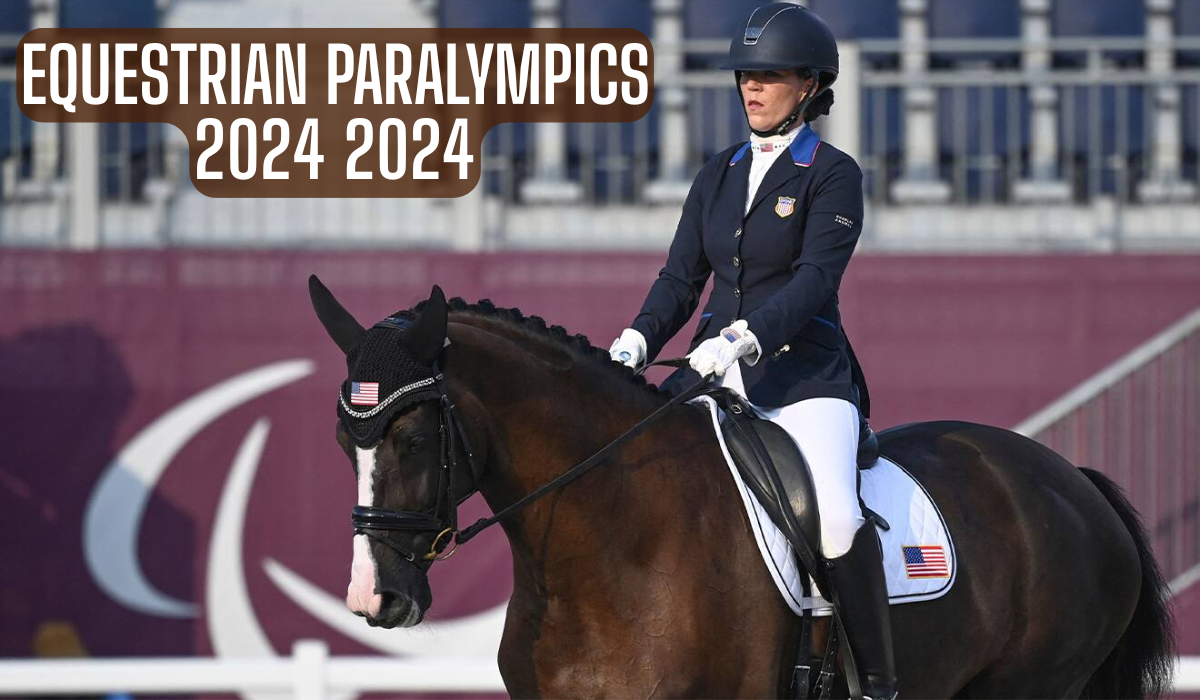The equestrian events at the 2024 Paris Paralympic Games will take place at the Château de Versailles from September 3rd to 7th. Only dressage is contested, and there are individual championship (grades I-V), individual freestyle championship (grades I-V), and a team championship (open).
1. A New Era of Para-Equestrian Excellence
The 2024 Paralympic Games once again proved para-dressage’s enduring power to transcend disability and unite riders from around the world. With heightened global interest and a boosted athlete roster, Brisbane 2024 marked a defining moment for inclusivity in equestrian sports.
2. Breaking the Class Barriers
The classification system ranging from Grade I (greatest impairment) to Grade V (least) remains the backbone of fairness in para-dressage. At Brisbane, athletes across all five grades delivered awe-inspiring performances, demonstrating how adaptability, precision, and trust between horse and rider outshine physical limitations.
3. Adaptive Training & Innovative Tack
Coaches and riders have refined training regimes with biomechanical analysis and personalized adaptive tack. This includes bespoke saddles, modified reins, adaptive stirrups, and voice- or buzzer-assisted aids. Every innovation is geared toward optimizing synergy with the horse not just compensating for challenges.
4. Spotlight on Rising Stars
- Ella Novak (Grade II) dazzled judges with eloquent, expressive movements, redefining elegance in technical compulsory routines.
- David Sato (Grade IV) turned heads with daring freestyle choreography set to original symphonic compositions.
- Team Finland (Grade V) claimed their first-ever team medal in equestrian Paralympics history proof that emerging programs can swiftly rise on the world stage.
5. The Human–Horse Connection
At the heart of every performance is a partnership founded on mutual trust. From daily groundwork to arena routines, athletes speak of an “unspoken dialogue” with their horses evidence that resilience transcends the physical, rooted instead in emotional harmony.
6. Global Impact & Legacy
Beyond competition, the 2024 Paralympics launched initiatives expanding disabled riding globally. New community programs, scholarship funds, and para-equestrian certification schemes are targeting rural and underfunded areas across Asia, Africa, and South America. The aim? A more equitable and far-reaching equestrian future.
7. What the Judges Value And Fans Love
Judges emphasized the “degree of difficulty” as a key criterion in 2024 meaning more animated, creative freestyle segments captured audiences both in-stadium and across social media. The fusion of artistry and technical rigor resonated beyond niche para-sport circles, amplifying appreciation for its athletic depth.
Key Details:
- Venue: Château de Versailles.
- Dates: September 3-7.
- Disciplines: Para dressage only.
- Events: Individual championship, individual freestyle championship, and team championship.
- Grading: Riders are divided into five grades (I-V) based on the severity of their impairment.
- Judging: Accuracy, quality, and artistic expression of the riding are judged.
Looking Ahead: Toward Paris 2028 and Beyond
With innovations seeded at Brisbane 2024, the equestrian paralympic community eyes even greater heights. Expanded athlete recruitment, universal accessibility standards at venues, and increasingly sophisticated adaptive equipment point toward a future where para-dressage is not just visible it’s a defining highlight of global sport.
In sumary, “equestrian paralympics 2024 2024” represents more than repetition it signals a doubling-down: double the inspiration, double the innovation, and growing unity between horse and rider. As this movement gallops forward, it reaffirms that excellence knows no bounds just as a horse and rider rise together, so does the human spirit.
FAQs About Equestrian Paralympics 2024 2024
1. What is para-equestrian sport at the Paralympics?
Para-equestrian sport, specifically para-dressage, is the only equestrian discipline in the Paralympic Games. It involves athletes with physical disabilities performing choreographed dressage routines that are judged on accuracy, rhythm, and harmony with the horse.
2. Where were the Equestrian Paralympics 2024 held?
The 2024 Paralympic Games were hosted in Paris, France, with the equestrian events held at the historic Château de Versailles a majestic backdrop that highlighted the elegance of dressage.
3. How are riders classified in para-equestrian events?
Riders are classified into five grades (Grade I to Grade V) based on the level and type of physical impairment:
- Grade I: Most severe impairments
- Grade V: Least severe impairments
Each grade competes in its own category to ensure fairness.
4. What types of horses are used in para-dressage?
Para-dressage horses are typically well-trained, calm, and responsive warmbloods or similar breeds. The key traits are temperament, balance, and sensitivity, as many athletes use subtle cues or adaptive aids.
5. Can visually impaired riders compete?
Yes. While most para-dressage riders have physical impairments, visually impaired riders may also compete with special adaptations, such as auditory markers or caller assistance.
6. What adaptive equipment do para-equestrian athletes use?
Adaptive equipment may include:
- Specialized saddles
- Loop or Velcro reins
- Magnetic stirrups
- Voice-activated aids or signaling devices
All equipment must be approved by the sport’s governing body to ensure safety and fairness.
7. How is scoring done in para-dressage?
Riders perform set routines judged on:
- Accuracy of movements
- Harmony between horse and rider
- Rhythm, balance, and impulsion
Freestyle routines (with music) add an artistic element and are also judged on creativity and difficulty.
8. What countries were standout performers in 2024?
Countries with strong para-equestrian programs such as Great Britain, the Netherlands, Germany, and the USA continued to excel, while newer teams like Finland and Brazil made impressive strides and earned medals.
9. How can someone get involved in para-equestrian sport?
Aspiring riders can begin through local riding for the disabled associations, therapeutic riding centers, or national para-equestrian federations. Many organizations offer training, equipment, and competitive pathways.
10. What is the legacy of the 2024 Paralympic equestrian events?
The 2024 Games pushed para-dressage further into the global spotlight. Key legacies include:
- Increased funding and visibility
- Expanded accessibility programs
- Greater representation from underrepresented regions
These changes aim to ensure that talent not geography or income determines success.

